There are a variety of ways to camp, with or without an RV. But, what is dry camping, exactly? Is it using a waterproof tent to stay dry while camping in the rain? Is it alcohol-free camping? Is it camping in the arid desert?
In today’s post, we’ll answer that question, and we’ll share some of the reasons why, after nearly two decades of full-time RVing, “dry camping” is our favorite way to go!
What Does “Dry Campsite” Mean?
A dry campsite has no hookups. No fresh water. No power/electricity. And no sewer hookups.
At a dry campsite, you’re off the grid – every grid – and completely reliant on the provisions you brought along with you. This could be a tent and a pillow, a luxury Class A motorhome, or anything in between.
When you’re at a dry campsite, you provide all of your own amenities.
What is the Difference Between Dry Camping and Boondocking?
Boondocking is also camping off the grid. But there’s a difference, (or there can be), between boondocking and dry camping.
Boondocking is dry camping, but dry camping isn’t necessarily boondocking.
While both terms represent camping without hookups, the term “boondocking” implies camping away from RV parks or developed campgrounds with designated campsites. But dry camping can occur at a developed campground, simply without connections to water, power, or sewer… often in a state, provincial or national park.
We’ll use ourselves as examples because we frequently enjoy both boondocking and dry camping.
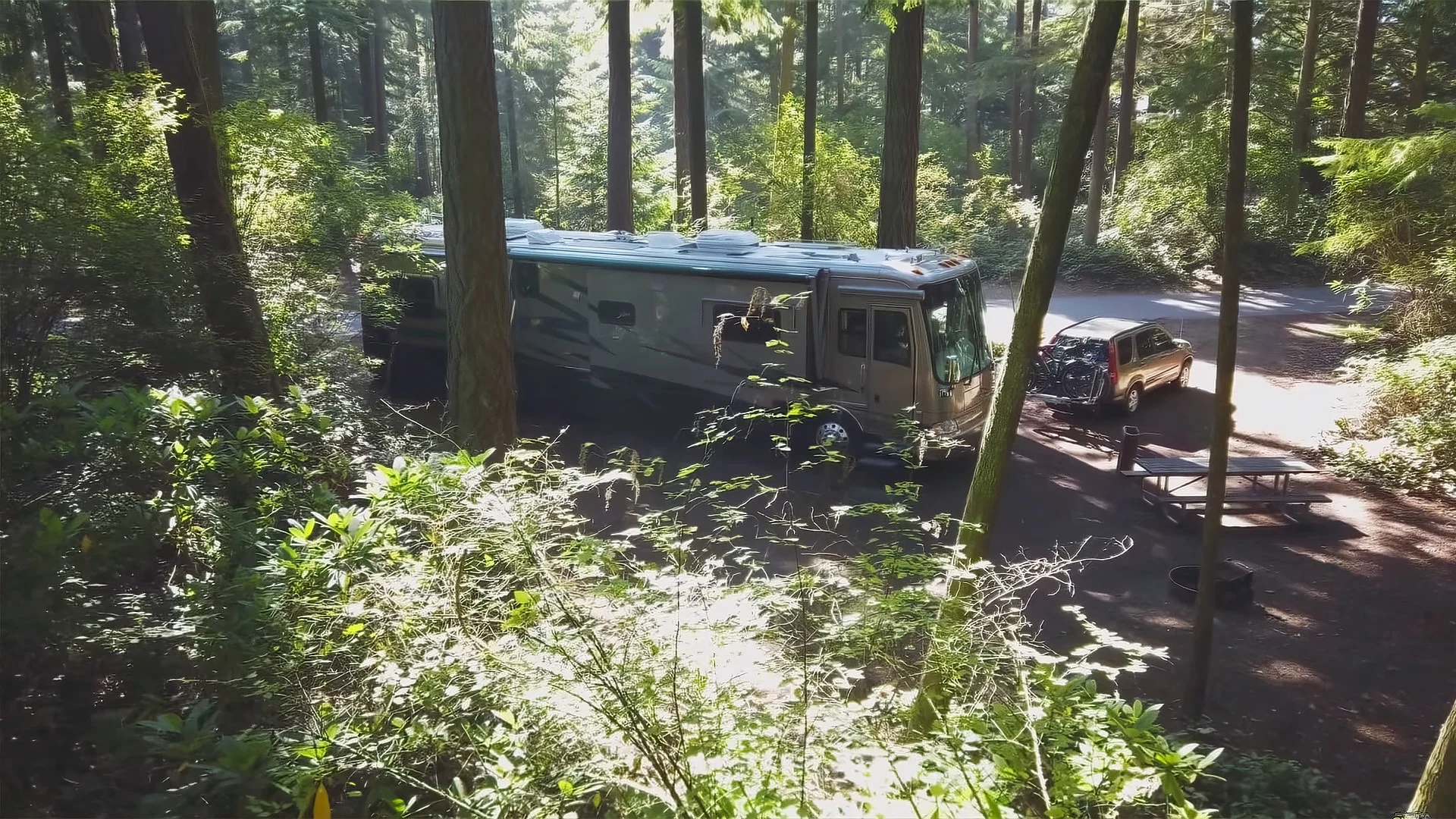
Here we’re camping at an established campground in a state park, but without hookups to water, power, or sewer. This is called “dry camping”.
When we go to a campground in our motorhome and we occupy a site in the woods without hookups, we’re dry camping. We’re at an established campground, in a designated campsite, but we don’t have any hookups to water, power, or sewer.
When we camp in the desert southwest in the middle of BLM (Bureau of Land Management) territory, we’re boondocking. We’re still dry camping, but we’re boondocking because we’re not in an established campground and not in a designated campsite.
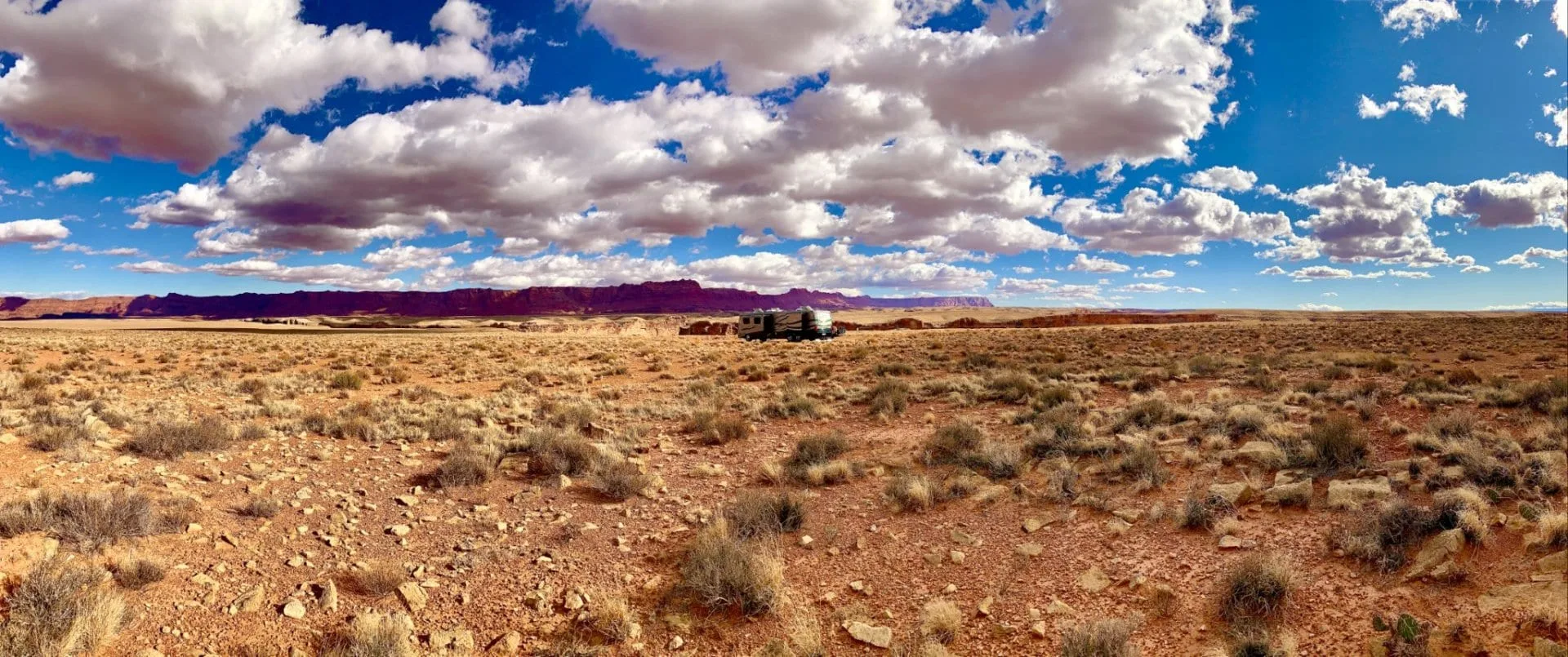
Hundreds of thousands of acres are made available to us for camping by the United States Bureau of Land Management (BLM). Here we are gratefully enjoying a stay on BLM land.
Is Dry Camping Safe?
Dry camping can be perfectly safe – as long as you have an understanding of your needs and your surroundings.
To safely dry camp you need to have enough water, a way to stay warm or cool if the ambient temperatures are at potentially dangerous levels (high or low), and anything else you may need for self-care… such as sufficient food and medications.
Being safe by maintaining an awareness of your surroundings applies more to boondocking far away from populated areas. For example, if you’re camping in bear country, you need to know how to do so safely. The same is true of areas populated by humans, but for the most part, dry camping is safe as long as you have the provisions you need and an awareness of your surroundings.
Ironically, when we’re asked about whether or not we feel safe when dry camping/boondocking, most people seem concerned that we’re in danger from other people. But the majority of human-caused trouble for RVers happens in densely populated areas. Not out in the middle of nowhere where there’s no one else anywhere nearby! We feel 100 times safer parked out, all alone, in the middle of the desert than we do parked in the center of a major city!
If you’ve read any of our blog posts, or if you’ve seen our YouTube videos, you may know by now that we’re avid boondockers. Boondocking is our favorite way to camp by far. For this reason, we’ve outfitted ourselves with everything we need to be able to live far off the grid for extended periods.
We live full-time in a (large!) Class A motorhome with high-capacity tanks for fresh water, gray water, black/wastewater, and propane. We have a residential refrigerator/freezer that we fill before we move off the grid for an extended period. We have plenty of tools for unexpected repairs. We have a very large solar array on the roof of our RV and a very large lithium battery bank, too, so that our power needs are well met. And finally, we have a tech cabinet full of technology that allows us to work online wherever we are, including “in the middle of nowhere”, as the phraseology goes.
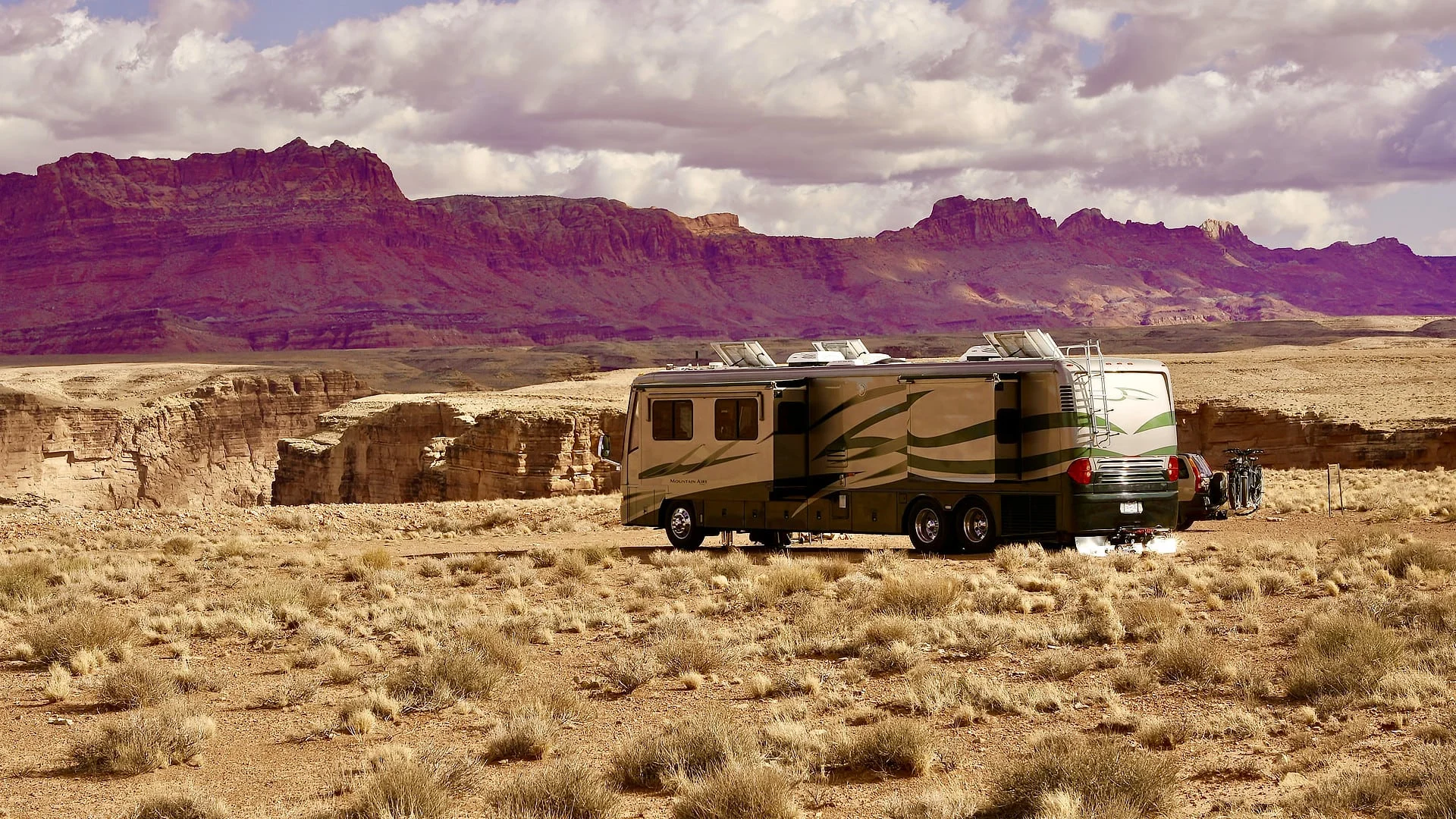
Here we are, living and working “in the middle of nowhere”, which is actually the middle of somewhere absolutely breathtaking – at the edge of a canyon, with purple mountains majesty in the distance.
Do you need all of that for boondocking? Absolutely not. But you do need to be able to tend to your own needs, whatever that means for you and the duration of your camping trip. You’ll need to carry enough water for the length of your stay (and you should have a way to bring extra water, in case of an emergency – water is SO important!), you’ll need to have a way to stay warm or cool, and you’ll need some way to have access to at least enough power to keep your cell phone charged up for safety. And of course, you’ll need food.
We absolutely encourage everyone to try boondocking – even if it’s just for a night or two to start.
Being tethered to hookups is great – we connect to hookups at RV parks on a regular basis, between boondocking trips. When our black and gray tanks are filling, and our fresh water tank is beginning to run low, we know it’s time to head to a place where we can dump black and gray, fill fresh and propane, and luxuriate in the amenities that a full hook-up RV site provides.
But then we move on to our next gorgeous, amazing, barely touched spectacle of nature.
Can You Dry Camp Anywhere?
Goodness, no. However, there are so many places where you can dry camp.
As we stated at the beginning of this post, you can dry camp at a campground in a hookup-free site in a state or national park, or at a commercial campground.
You can also camp in many remote places on BLM land. The United States Bureau of Land Management (BLM) controls 245 million acres of land, and yes – a lot of it offers free dry camping/boondocking. The same is true for National Forests and Conservation Areas, as we noted in this post on the best ways to find RV boondocking spots.
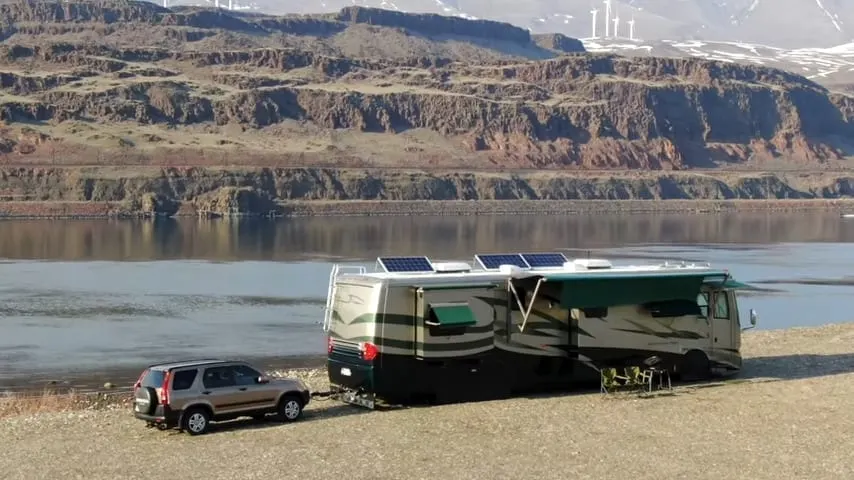
Check out our post linked above for tips on how to find spectacular boondocking spots like this one.
If you’re traveling a long distance and need to spend a night or two along the way to grab a bite to eat and catch some shut-eye before traveling onward the next day, you can even “dry camp” in a parking lot. There are many that offer a spot for folks to rest overnight, including Walmart, Cracker Barrel, and others.
Be clear on this, however: while this is, technically, “dry camping”, you’re not invited to actually camp in these parking lots. You’re overnighting – not camping. Check out our post on how to find free overnight parking for more information.
You can also pay an annual fee to spend overnights at farms, wineries, breweries, and other locations through Harvest Hosts, and on private properties offered by folks associated with Boondockers Welcome. Again, this is dry camping, but hardly roughing it. ????
Tired of RV Parks and Campgrounds and want to try something different? Stay overnight at wineries, breweries & distilleries, farms, and other attractions instead! Enjoy unique experiences that...Show More
Tired of RV Parks and Campgrounds and want to try something different? Stay overnight at wineries, breweries & distilleries, farms, and other attractions instead! Enjoy unique experiences that you'll always remember.
Save 15% on your first year’s membership to Harvest Hosts... click on the "Go To The Deal" button!
Show LessSafe, free and legal RV parking on private property. It’s like having friends and family everywhere! A great alternative to being stacked side-by-side in an RV park.
<a...Show More
Safe, free and legal RV parking on private property. It’s like having friends and family everywhere! A great alternative to being stacked side-by-side in an RV park.
Watch our Boondockers Welcome video
Boondockers Welcome in Australia
Read Our RV Trip Planner Post
Save 15% on your initial membership with coupon code.
Show LessHow to Conserve Water When Dry Camping
There are a number of ways to conserve water when dry camping. These include being mindful of water use when washing dishes by first wiping away food and residue, and then using as few dishes, pots, and pans as possible. Some folks even like to wash dishes when boondocking by using a spray bottle with vinegar and water.
Another good way to conserve water when dry camping is by using water-conserving showerheads, particularly one with a shut-off so the water doesn’t have to run throughout the duration of your shower (also known as a “Navy shower” where you run the water to get yourself wet, cut off the water supply while soaping up and washing hair, and then turn the water on again to have a good final rinse.)
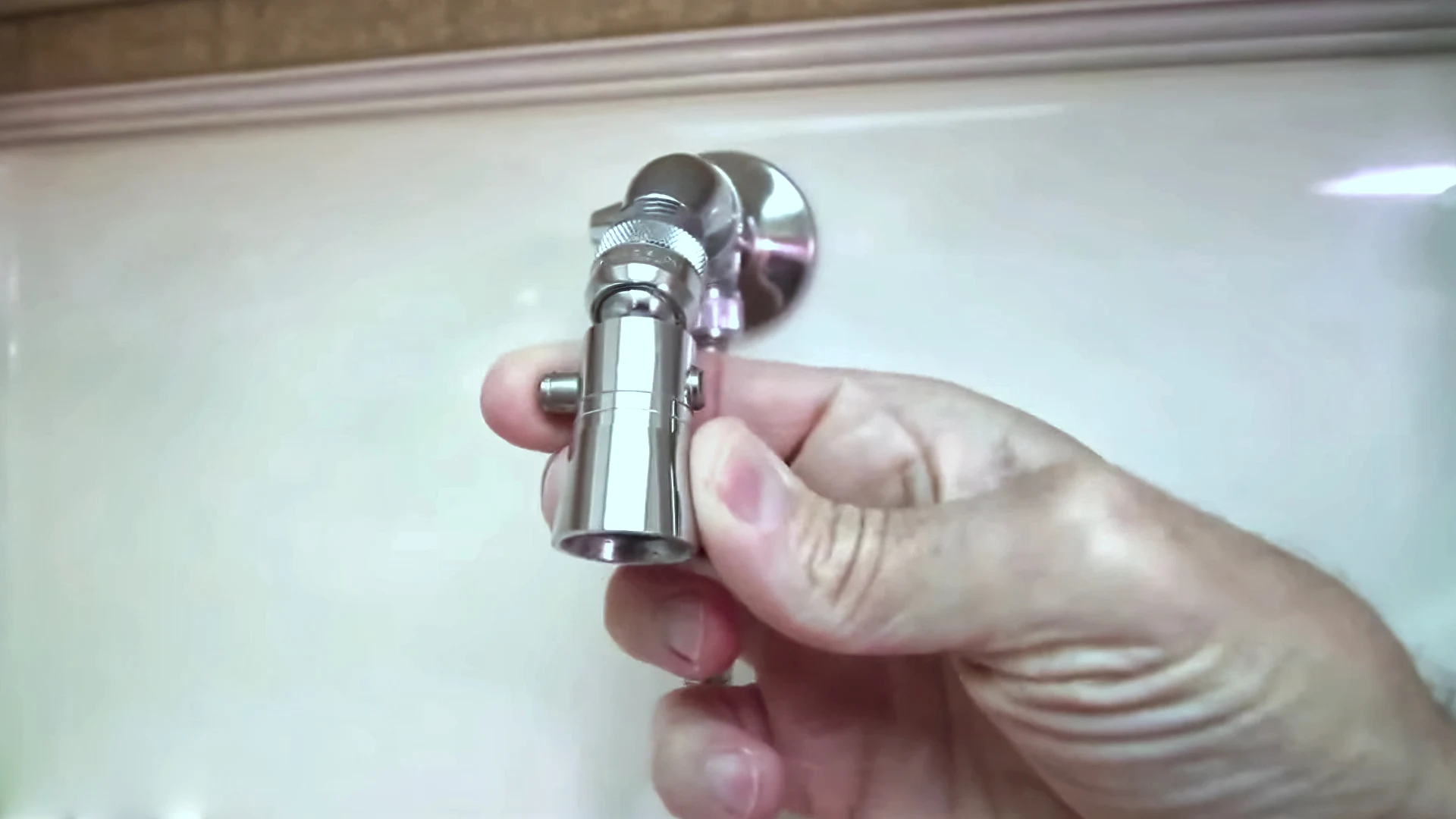
A low-flow showerhead with a pause valve is a great way to save water when showering.
We have a large fresh water tank, but our water supply is definitely the thing that forces us out of a favorite boondocking spot to replenish. For campers who have a small water supply, there are some fantastic water bladders on the market that are capable of significantly increasing your available water supply, thus extending your boondocking/dry camping time.
How to Generate Electricity/Power When Dry Camping
There are many ways to generate electricity when dry camping. These include using solar panels and a battery bank, a gas generator, or a “solar generator” that charges via the sun or through your vehicle’s alternator. For very minor power needs such as charging a cell phone, there are small battery banks on the market to keep on hand.
As always, the amount of power you need to generate when you’re boondocking depends on your needs.
If your power requirements are significant, solar panels and a substantial battery bank may be the way to go, depending on how frequently you camp off-grid. Here’s some information on the solar system we use to power our Class A motorhome when we’re boondocking. Our video on how we maximize the power of the sun by tilting those solar panels may also be of interest.
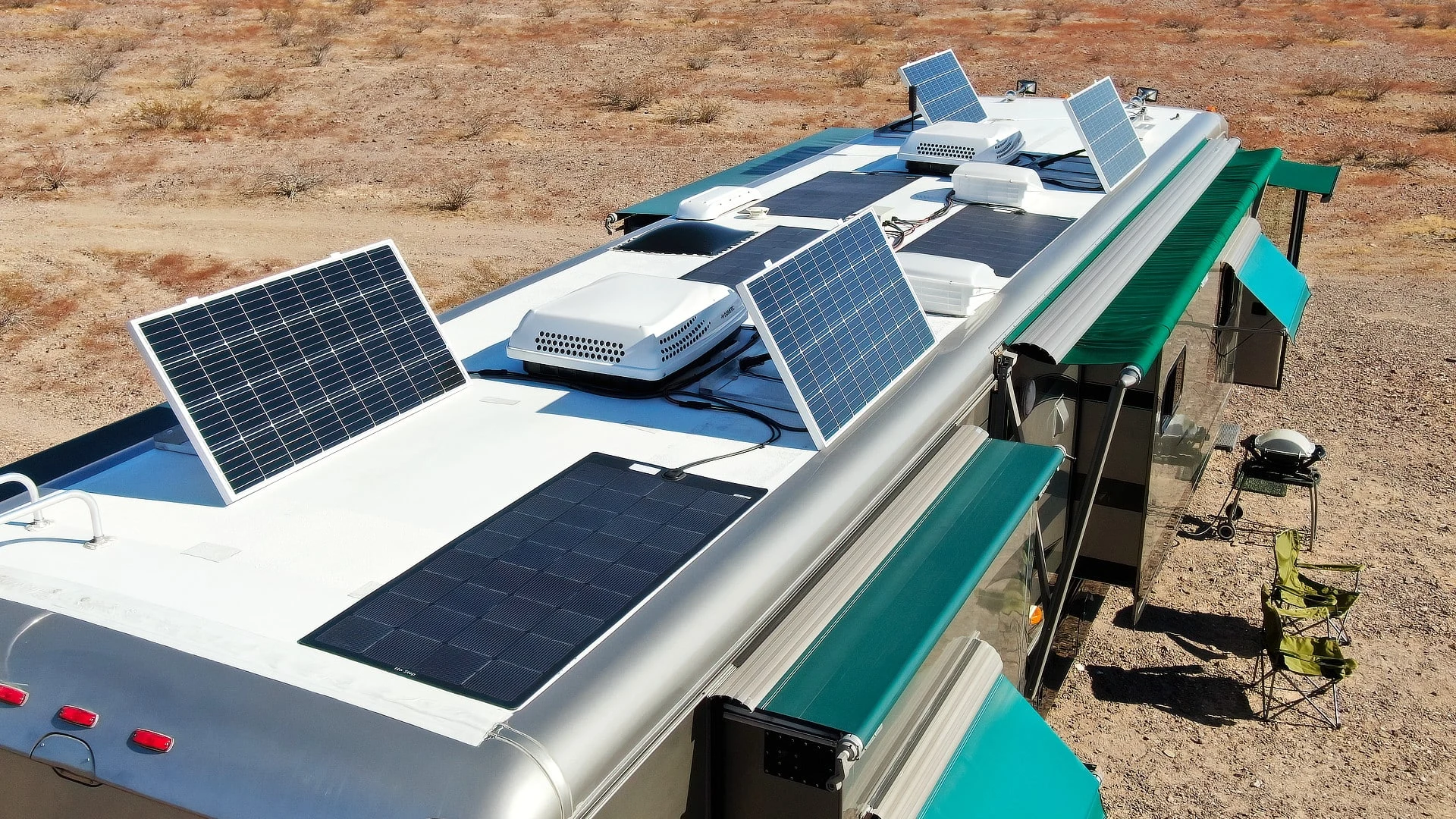
We have a fairly massive solar array and the ability to maximize our harnessing of the power of the sun by tilting half of our solar array accordingly.
But remember – our power needs are significant. We live and run a few businesses from our RV full-time. And our large residential refrigerator requires a significant amount of power to keep cool. Your needs may be far less than ours… and require much less expense, tech, and equipment to support them.
If you’re not sure whether solar panels are for you, or if you’ve been considering a solar panel or several but you aren’t sure how many you’d need for your own experience, this general post on solar panels may be helpful to you as you get started in your research.
Learning how to save power while RV boondocking is also important, and if you’re traveling in a Class A rig, check out our complete guide to Class A RV boondocking.
Why We Love Dry Camping / Boondocking
We love nature. We love hiking, biking, and kayaking. We love listening to the quiet way the world moves when it’s not filled with the hustle and bustle of a species in a hurry.
We enjoy the sunrise, the sunset, and the way the moon fills the sky with just enough light to see what’s around us. We love the peace of our natural surroundings and the lack of constant distraction. And nothing beats a horizon-to-horizon night sky in the desert, sparkling with more stars than you’ve ever seen before because there aren’t any cities nearby.
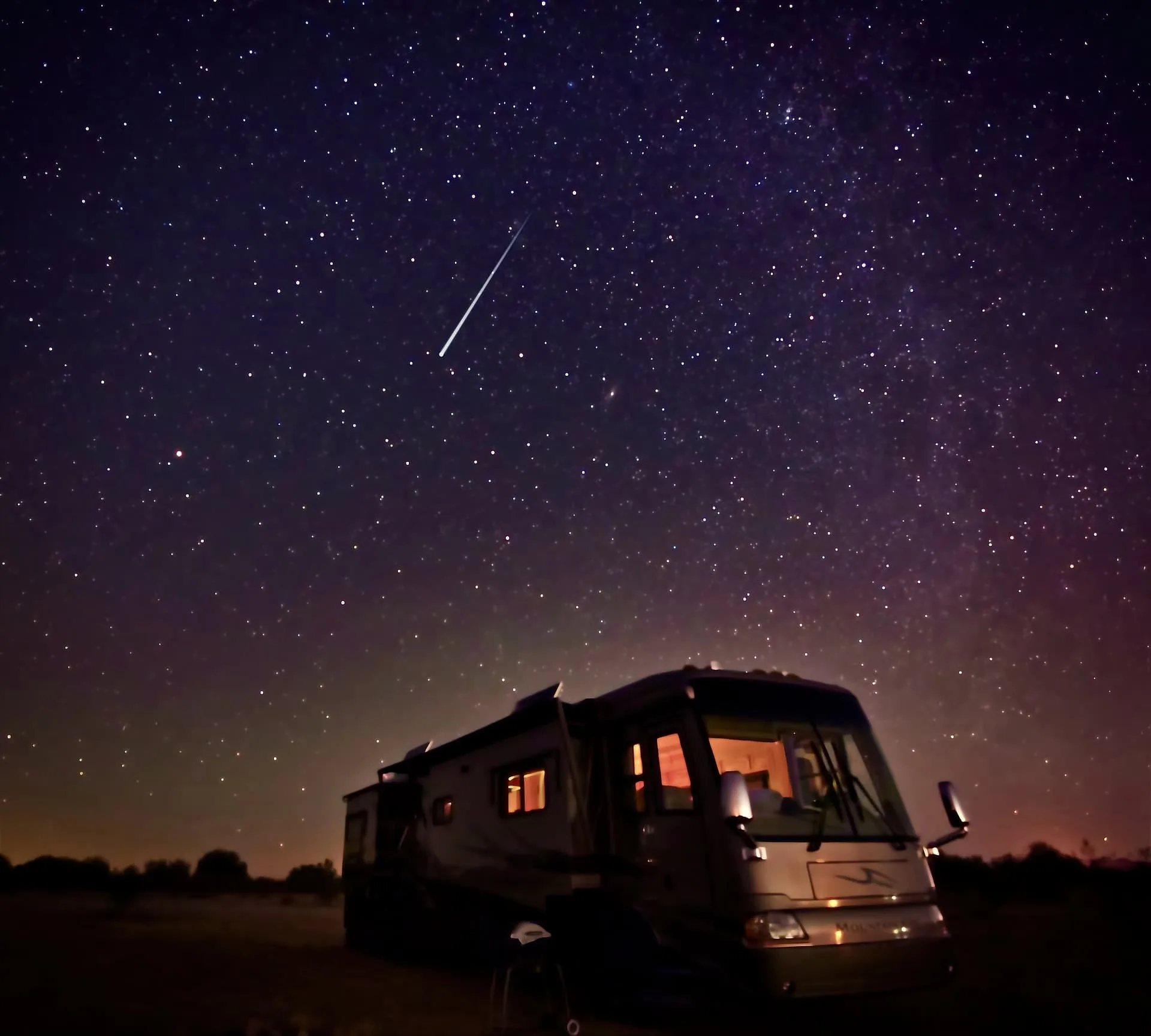
All the light we need – sprinkled throughout the night sky around us.
And we think you might love it, too!
If you’re nervous about cutting the cord and getting off the grid for a trial run, check out this video. We hope it will inspire you to give our favorite way of camping a try.
Geek Out with Us Every Week
Join our newsletter to learn about all things RV-related. Every week we offer free tips, tricks, product reviews, and more to our online community of RVers. So, whether this is your first time on the road or you’re a seasoned expert, we’d love for you to geek out with us!


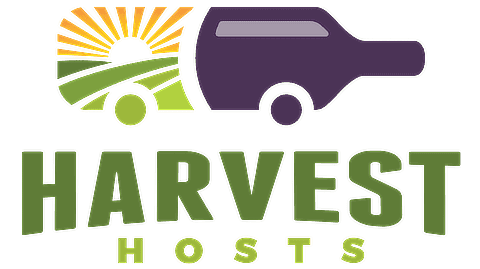
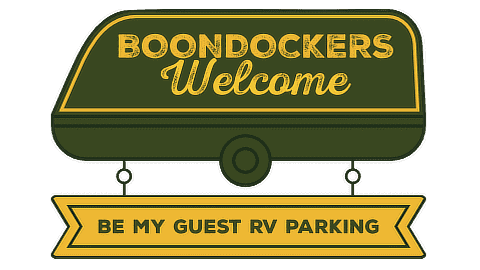
Hugh
Friday 12th of November 2021
We have a camper van, no solar or generator. We bring an extra 10 gal. of water & we can easily dry camp for two weeks before we need to get food or water. You make it sound way to complicated. Just get out & have fun.
TheRVgeeks
Friday 12th of November 2021
It's not that it's complicated, but more that everyone's comfort level is different. We know RVers who would never consider boondocking... until we showed them a few of the ropes. Now they love it for as long as they're comfortable, which varies a lot by tank capacity and personal limits. It's great that you're out there having fun!
Drew
Friday 12th of November 2021
For those who may not know- Love's Travel Stops are beginning to offer overnight rv spots in certain locations. They want to offer them nation wide soon. Some of these spots have hookups and some not. Right now they have one in Missouri and a couple in Tenn. or Kentucky. I hope more places decide to do this as more places like Cabella's, Cracker Barrel, and others refuse rv's.
TheRVgeeks
Friday 12th of November 2021
That's good to know, Drew! Having more options is always a good thing.